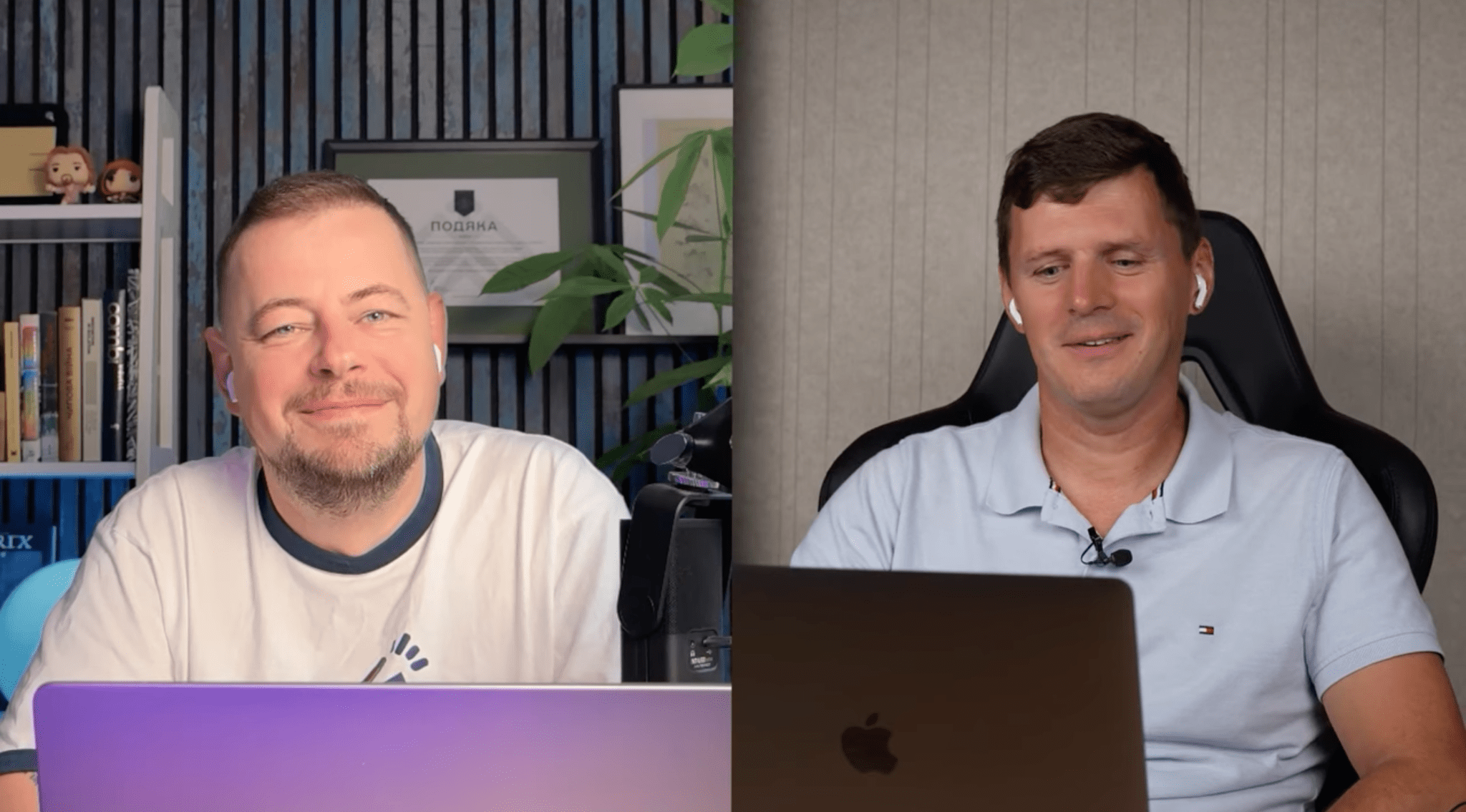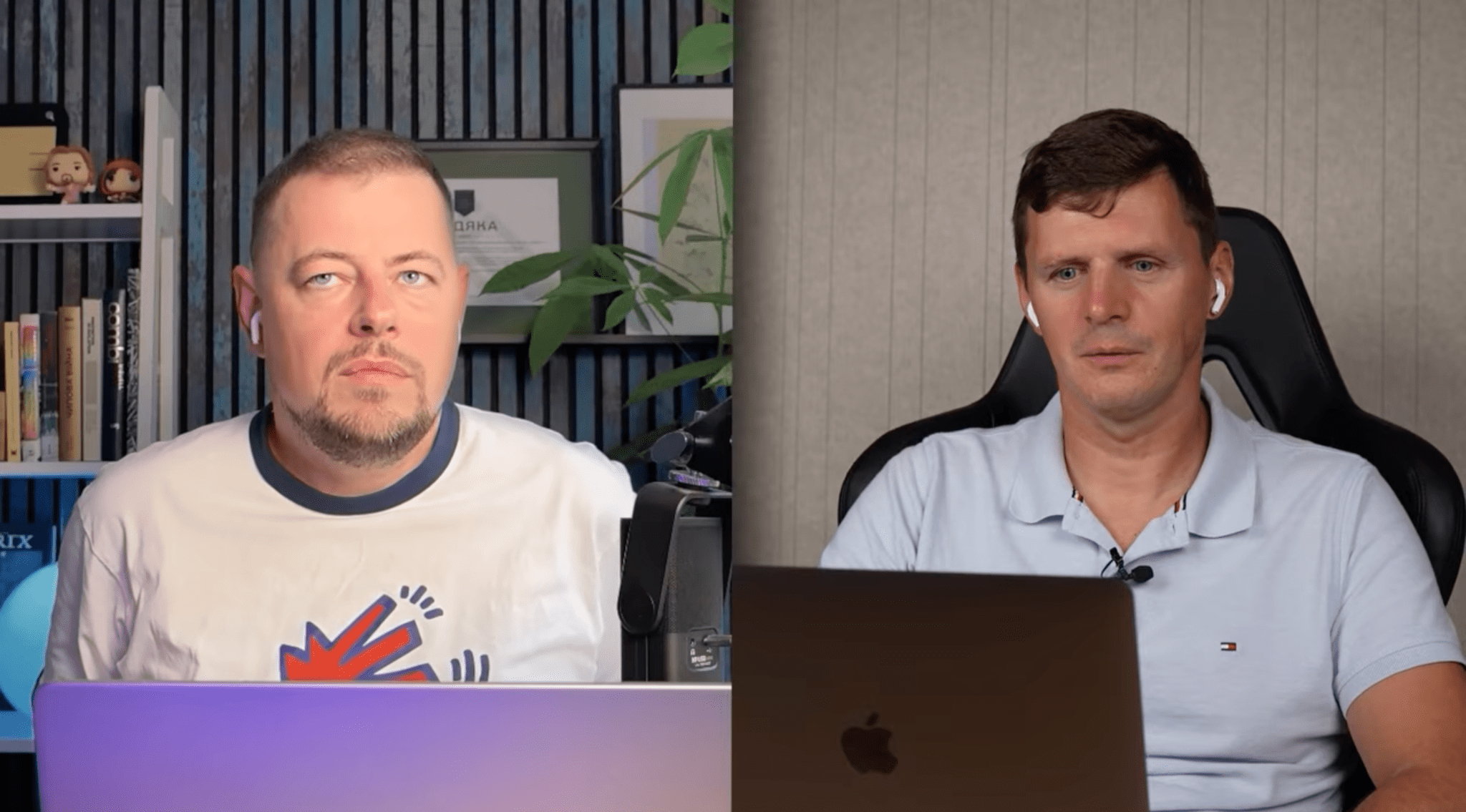
George Johnson
Expert Writer
November 13, 2025

George Johnson
Expert Writer
November 13, 2025

In our latest episode, we caught up with Andriy Chumachenko, co-founder of FRACTAL (ex-Netpeak) and B2B marketing agency BASE. We talked about the highs, the missteps, and the lessons that come with building and growing a business — from hiring struggles and team dynamics to how AI is reshaping B2B marketing.
FRACTAL is a Ukraine-based digital marketing and tech ecosystem founded in 2006. Today it brings together over 24 companies and more than 1,400 professionals across the globe. In 2024, its revenue grew by 70 percent year-over-year, marking another strong chapter in its fast-moving story.
Here’s what stood out from our conversation.
Brands are finally catching on that users don’t live in one place. Some still sell well through Viber, while others are shifting to Telegram because that’s where their customers spend time. The rule is simple: go where your audience already is.
Telegram’s real advantage isn’t just its reach but how easy it is to build on. Companies can quickly create chatbots, automate campaigns, and use it as a genuine retention channel, sending abandoned cart reminders, follow-ups, or personal offers right inside the app. For now, no other platform offers the same mix of flexibility, scale, and speed.

A new player is entering the messaging scene — RCS, or Rich Communication Services. Think of it as SMS 2.0: you can send images, audio, product carousels, and even locations, all through a phone’s native messaging app. Unlike old-school text messages that rely on mobile networks, RCS runs on the internet and was built by Google, now supported by Android and soon by Apple.
Once fully adopted by mobile carriers, RCS could become a major marketing and retention tool. Instead of juggling multiple apps like Telegram or Viber, users will receive personalized messages, offers, or updates directly in their default messenger. It’s early days, but the idea of bringing rich, interactive messaging back to the phone’s native inbox could reshape how brands communicate with customers.
Once seen as an old-school channel, email marketing is making a comeback — and it’s now one of the strongest growth areas for many agencies. What started as a small add-on to SEO and paid campaigns has turned into a full retention department that handles everything from email and Telegram outreach to personalized remarketing flows.
Over the years, the balance has shifted. Where the agency’s revenue was once split evenly between SEO and PPC, retention marketing has now earned its place as a core pillar. Clients see consistent results, the team keeps hitting growth targets, and plans for the year ahead are getting even more ambitious. Email may not be new, but in the right hands, it’s still one of the most powerful tools for keeping users engaged.
Staying on top of new technology isn’t optional. The team constantly tests what’s emerging — from AI tools to automation and even past waves like blockchain and Web3 — to see what can actually improve their work. AI is already part of daily operations, helping the team save time, speed up tasks, and focus on results that matter.
They use it not just for convenience but as a way to stay ahead of competitors. Whoever understands and applies new tools first gets the real advantage, and that’s the mindset driving FRACTAL's approach to digital marketing.
But it’s not just about using tools; it’s about spotting the breakthroughs early, understanding what they can actually do for clients, and staying close to the edge of innovation, where the real opportunities appear first.

Machines are getting good at tidying up the boring parts — answering tickets, tweaking bids, sorting data — but the interesting work starts where patterns end. AI can keep things running, yet it can’t notice when the game changes.
That’s where people still matter: spotting gaps, asking questions no one thought to ask, and coming up with ideas that don’t fit the formula. The future of work isn’t man versus machine; it’s people deciding what’s worth automating and what’s worth imagining.
In a typical agency setup, clients come with a fixed request — SEO, ads, or email campaigns — and get passed to a manager juggling a dozen projects. It works, but the results often stop at task delivery.
A newer approach flips the script. Instead of selling services first, the team starts by diagnosing the business problem: why growth slowed, where leads drop, what limits revenue. Then they build a solution around that, combining strategy, creative work, and technical execution in one flow. It’s slower to start but leads to stronger results and longer partnerships, because the agency becomes a business partner, not just a service vendor.

At BASE, part of FRACTAL, the focus is on embedding a senior marketer directly into the client’s business instead of selling separate services. This expert audits analytics, ad accounts, and funnels, builds a comprehensive growth strategy, and then manages all the moving parts — from SEO and PPC to creative and automation — using the best partners for each task.
The model works best for B2B companies that already have resources and traction but lack a marketing lead who can see the bigger picture, connect strategy with execution, and keep growth consistent across all channels.
Fractional CMOs are becoming a global trend, with experienced marketers working alongside founders and boards at the strategy level. They help define long-term direction, set priorities, and step in occasionally to fine-tune the plan. It works well for companies that need senior guidance without hiring a full-time executive.
BASE follows a different model called Marketing as a Service (MaaS). Instead of advising from a distance, its marketers become part of the client’s operations, analyzing data, managing budgets, launching campaigns, and taking full responsibility for performance. Clients see clear numbers—how much they invest and what return they can expect—while BASE manages every step in between.

The talent market has become unpredictable. Some roles, even new ones like prompt engineers, can be filled surprisingly fast when the right person appears. Others, such as email and retention marketers, remain in high demand because automation still cannot replace what they do.
AI has changed certain workflows but not necessarily the people behind them. For example, repetitive design work like resizing ad creatives is now handled by tools that can adjust images and text layouts automatically. Instead of eliminating jobs, this shift lets designers focus on more complex, creative tasks.
The same logic applies across teams. AI can handle routine execution, but strategy, creativity, and human judgment are still the core of effective marketing.
Retention is where the real growth happens. With channels like Telegram, RCS, and smarter email automation, brands are learning that it’s not just about reaching people — it’s about keeping them around. When done right, these channels turn casual buyers into long-term customers.
The smart move now is to let AI handle the repetitive stuff and focus human energy on relationships, timing, and relevance. Because at the end of the day, keeping a customer is still cheaper (and smarter) than winning a new one. And hey, if your emails start sounding too perfect, maybe it’s time to remind your AI who’s really in charge.
Alex Danchenko
|
March 1, 2023
Find out what is the difference between omnichannel and cross-channel. Learn about steps to create a cross-channel marketing strategy.
Alex Anikienko
|
October 7, 2025
Discover how to balance AI automation with authenticity to build trust and boost conversions in your brand сommunications

